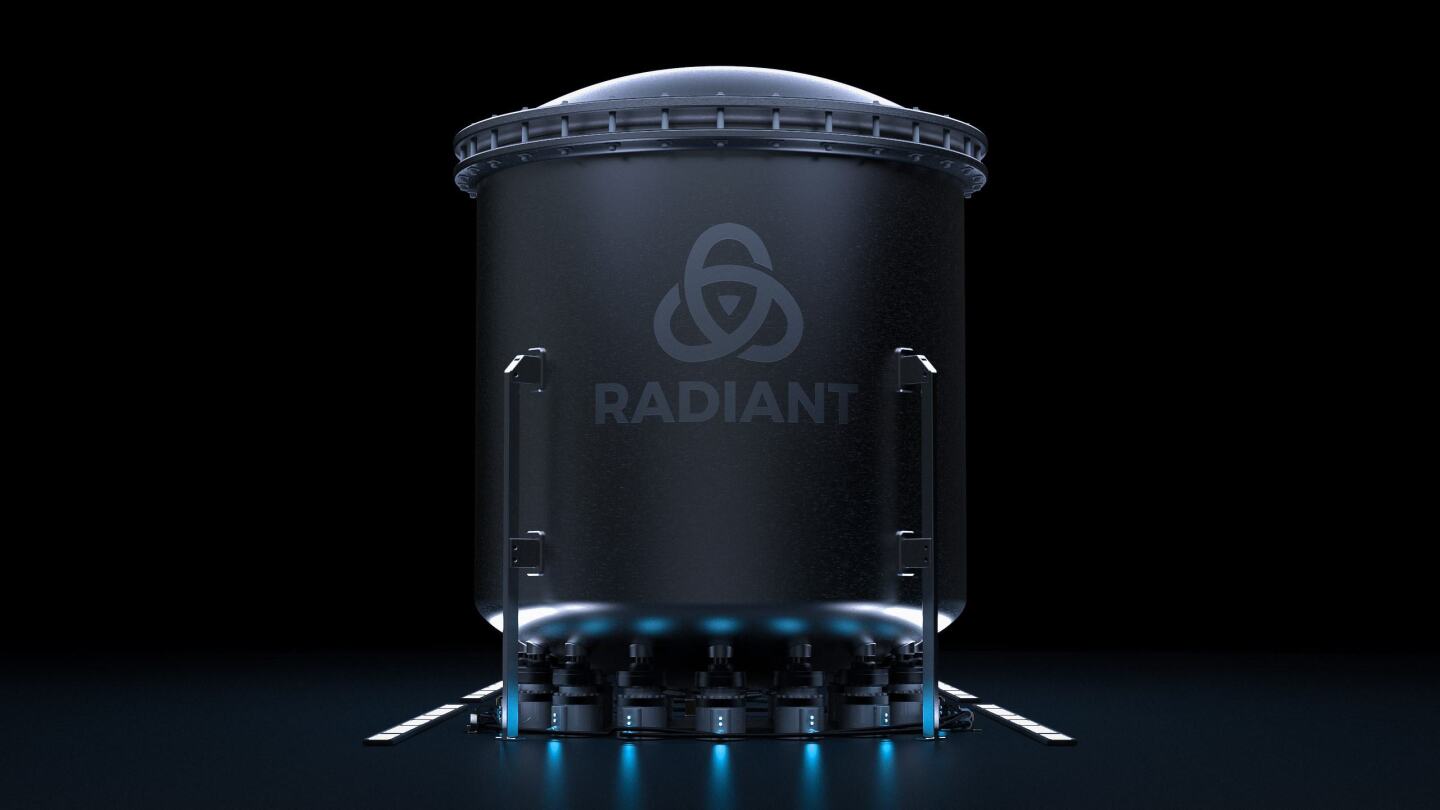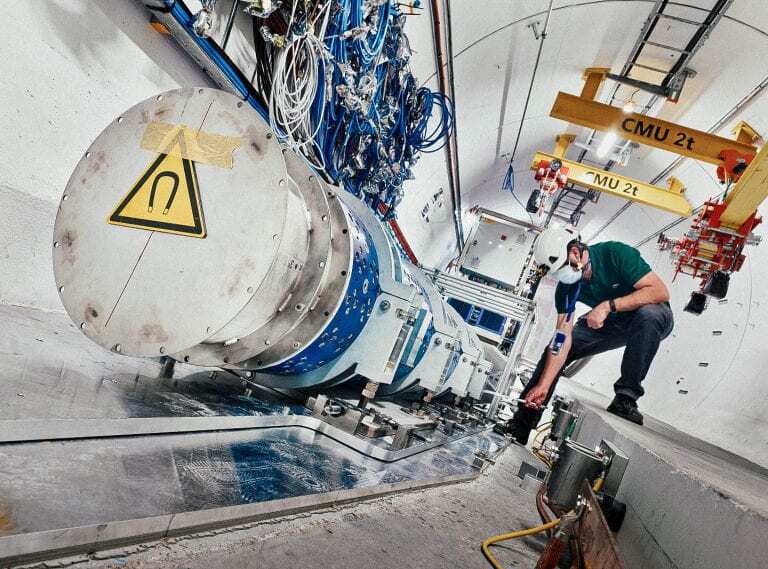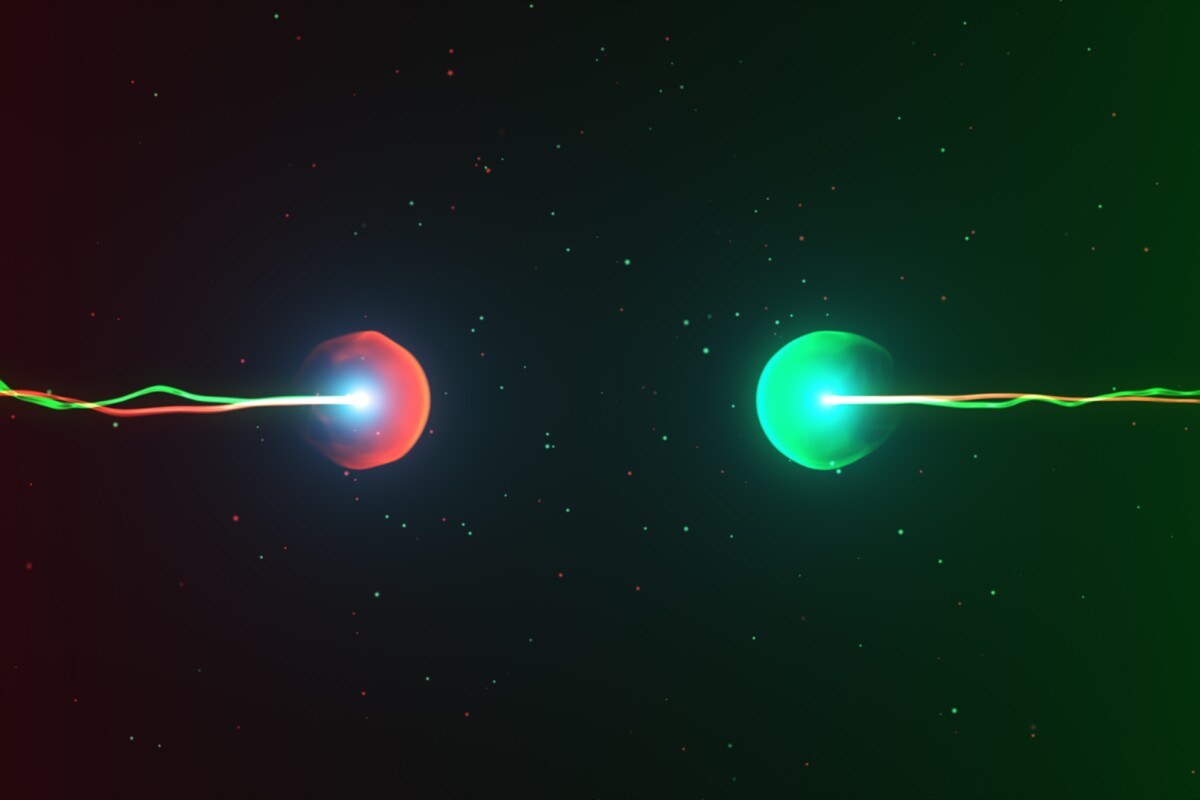Tardigrades shot from a gun, the world's largest offshore wind turbines, nuclear fusion records, radical new materials, and potty-trained cows ... here's a look back at some of the incredible stories science served up in 2021.
Particle seen switching between matter and antimatter at CERN

In June, a team of Oxford physicists announced that data collected by the Large Hadron Collider indicates that a subatomic particle called the charm meson can shift between being matter and antimatter, suggesting why the universe escaped annihilation shortly after the Big Bang.
Tardigrades fired from a gun to test theory asteroids seed life

Tardigrades, the famous near-indestructible microscopic water bears, may be able to seed life through space according to scientists at the University of Kent, who fired the frozen little critters out of a gun into sand to see how well they could survive an asteroid collision.
World's largest offshore wind turbine starts operating at 14 MW

As part of the quest for green power, 2021 saw GE Renewable Energy unveil the prototype of its 14-MW Haliade-X offshore wind turbine in Rotterdam, which will be capable of cranking out up to 74 GWh of energy per year when it goes into service in 2026.
World's biggest wind turbine shows the disproportionate power of scale

Not to be outdone, China later announced a 16-MW offshore wind turbine that could punch out six more GWh per year than the Haliade-X thanks to its three 118-m (387-ft) blades. It's slated to go into operation in 2023.
China claims a new fusion record with its "artificial sun" nuclear reactor

China set another record in May with its Experimental Advanced Superconducting Tokamak (EAST) fusion reactor, which heated a nuclear plasma to an unprecedented 120 million °C (216 million °F) for 101 seconds, bringing practical fusion energy a step closer.
Bill Gates' next-gen nuclear plant packs in grid-scale energy storage

Sticking to more conventional fission technology, the US Department of Energy, Bill Gates's Terrapower, and GE Hitachi Nuclear Energy have joined forces to build a cost-effective sodium nuclear reactor that's expected to be built at a TBD site and operational by the end of the decade. In addition, the reactor will be linked to a molten-salt energy storage system, allowing the plant to operate at its optimum power levels regardless of commercial demand.
China adding finishing touches to world-first thorium nuclear reactor

Another impressive Chinese effort in 2021 was the announcement that the government has begun work on the world's largest thorium reactor cooled by molten salt, to be completed by 2030. The ultimate goal is to build production 100-MW plants that can supply power to 100,000 people.
Radiant aims to replace diesel generators with small nuclear reactors

Meanwhile, California's Radiant company is working on a 1-megawatt nuclear microreactor that can power 1,000 homes. The helium-cooled reactor will be powered by advanced particle fuel and would be portable enough for both civilian and military applications.
Extraordinary new material shows zero heat expansion from 4 to 1,400 K

Another exciting bit of science news this year came from the University of New South Wales, where researchers have developed a thermally stable material made of scandium, aluminum, tungsten and oxygen that doesn't change its volume at temperatures ranging from 4 to 1,400 Kelvin (-269 to 1126 °C, -452 to 2059 °F), with potential applications in everything from medical devices to hypersonic vehicles.
First "fossil-free" steel delivered to Volvo in Sweden

In August, Sweden's SSAB reached a green milestone as it rolled out the first slab of "fossil-free" steel that replaced the coke and coal normally used for smelting with an electric arc and hydrogen produced by sustainable sources. The green steel is earmarked for Volvo, which will use it to build electric trucks.
Microplastics found to alter the shape of and de-cluster human lung cells

Less happy news came from Florida State University (FSU), which highlights the threat posed by microplastics that can alter lung cells' metabolism to slow down and hinder their proliferation and growth, as well as causing the cells to decluster, leaving gaps in the developing lung tissue.
Galapagos tortoise species returns from "extinction" after 115 years

On the brighter side, DNA tests by a team led by Yale University have confirmed that the Fernandina Giant tortoise, which was thought to have died out over a century ago, has reappeared.
Neutrino detector finds new type of "ghost particle" from the Sun

In December, the Borexino neutrino detector in Italy added a vital piece to the puzzle of how the Sun operates when the giant underground detector found a theorized neutrino produced by nuclear reactions of carbon, oxygen, and nitrogen atoms in the core of our parent star.
"Ghost particles" detected in the Large Hadron Collider for first time

Sticking with neutrinos, the FASER experiment connected to the Large Hadron Collider managed, for the first time, to detect a neutrino being produced in particle collisions at a particle collider. Neutrinos are so non-interactive that billions of them shoot right through the Earth every second, so this was a real needle-in-a-haystack moment.
Anti-aging research uncovers new role for telomeres

In the field of anti-aging research, a team of scientists at the Université de Montréal spent 2021 probing the part that telomeres, the tiny caps on the ends of chromosomes that keep them from chemically fraying, play in protecting cells from the aging process. And what they found wasn't what scientists previously thought.
Google and Harvard map brain connections in unprecedented detail

In a more neurological vein, engineers at Google and Harvard used 225 million images and a whopping 1.4 petabytes of data to generate a 3D map of just one millionth of the cerebral cortex that is browsable and searchable, providing new insights into the incredible complexity of the human brain.
Synthetic organism undergoes cell division in breakthrough study

Another one of this year's major scientific achievements came courtesy of scientists from the J. Craig Venter Institute (JCVI), the National Institute of Standards and Technology (NIST) and MIT, who produced the world's first synthetic single-celled organism that can divide and grow like a regular living cell, which could open the way to designer cells in the future.
Scientists toilet-train cows to reduce their environmental impact

On a more sanitary note, German and New Zealander researchers are working on a way to reduce greenhouse emissions from cattle farms by potty training cows to only "go" at a bespoke MooLoo that collects the urine for proper disposal.
Steak knife made from hardened wood is 3 times sharper than steel

A final nod goes to the University of Maryland, where scientists came up with a new way to harden wood by removing its lignin and then subjecting it to high pressure. The result is a wood so hard that it can be formed into knives that are almost three times sharper than a standard dinner table knife. They are also dishwasher-safe, which is more than can be said for many steak knives.
























